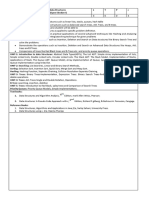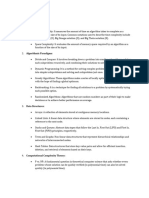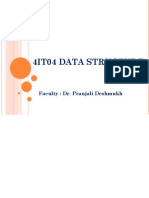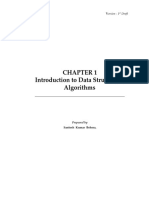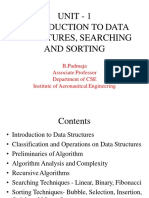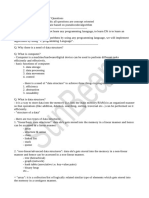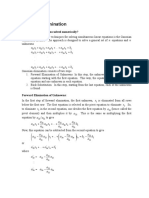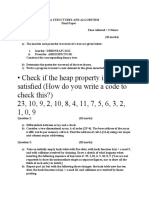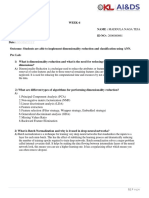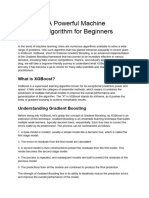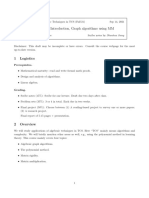0% found this document useful (0 votes)
10 views2 pagesDSA (Unit-1) Future Minds - Short Notes
The document provides an overview of data structures, including definitions of data, information, records, and files. It covers elementary data organizations, operations on data structures, algorithm analysis, asymptotic notations, time-space trade-offs, and searching techniques such as linear and binary search. Key concepts include time and space complexity, with examples illustrating their application.
Uploaded by
kingkohli2024rajaCopyright
© © All Rights Reserved
We take content rights seriously. If you suspect this is your content, claim it here.
Available Formats
Download as PDF, TXT or read online on Scribd
0% found this document useful (0 votes)
10 views2 pagesDSA (Unit-1) Future Minds - Short Notes
The document provides an overview of data structures, including definitions of data, information, records, and files. It covers elementary data organizations, operations on data structures, algorithm analysis, asymptotic notations, time-space trade-offs, and searching techniques such as linear and binary search. Key concepts include time and space complexity, with examples illustrating their application.
Uploaded by
kingkohli2024rajaCopyright
© © All Rights Reserved
We take content rights seriously. If you suspect this is your content, claim it here.
Available Formats
Download as PDF, TXT or read online on Scribd
/ 2






